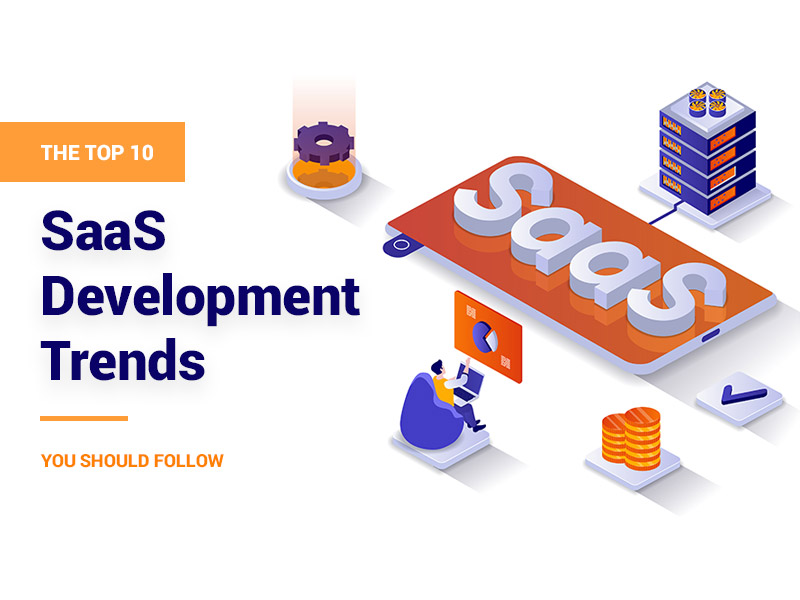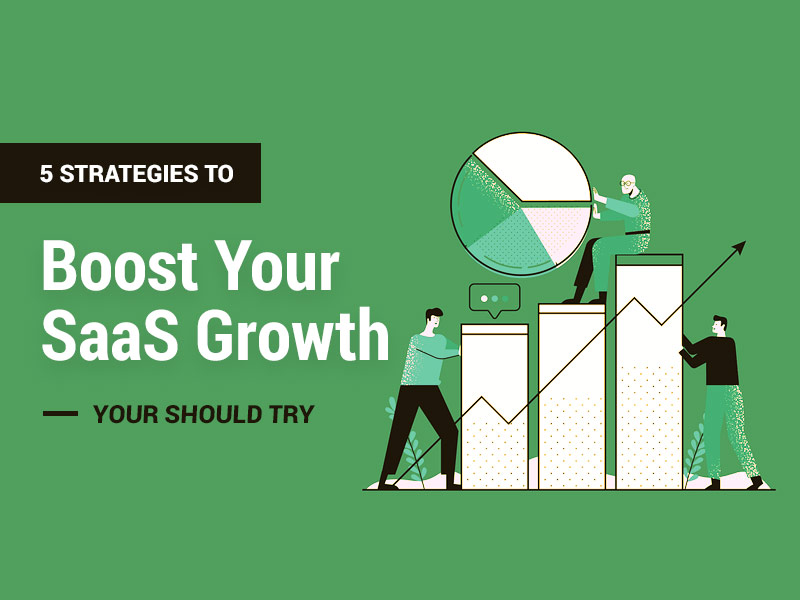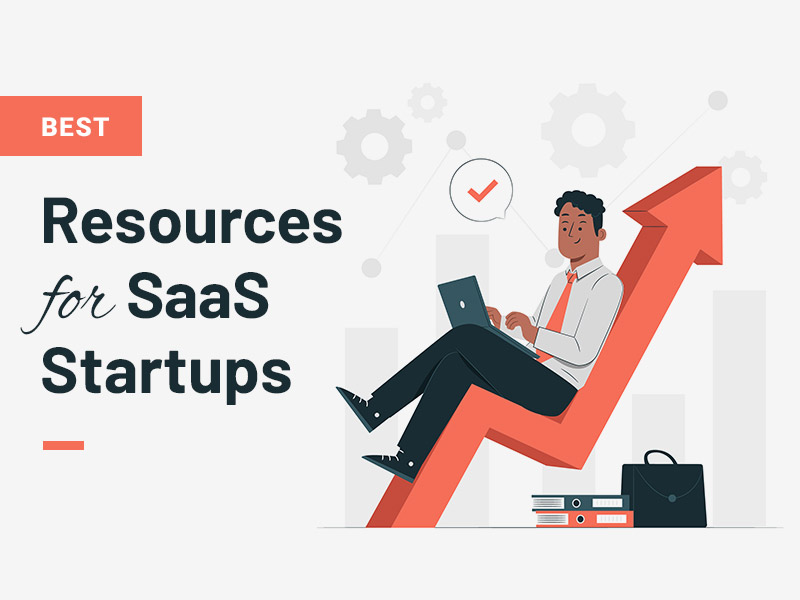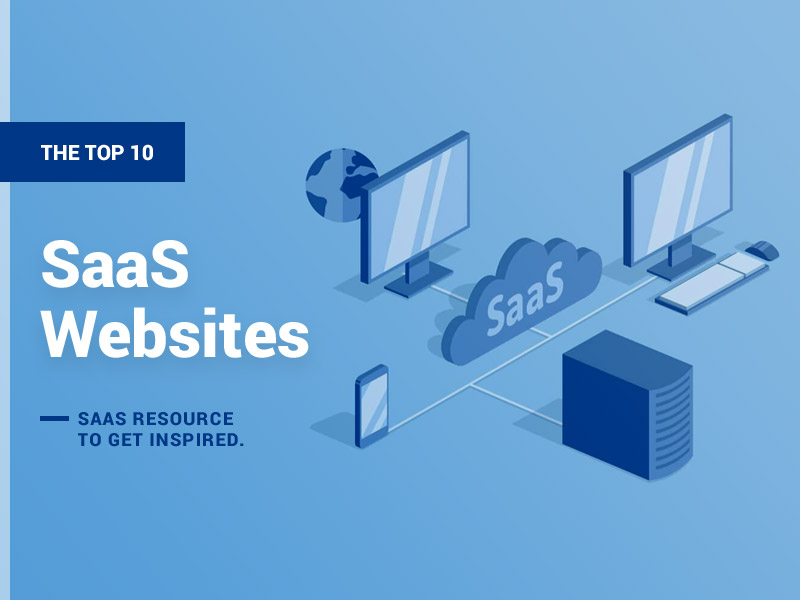Nowadays, Software-as-a-Service (SaaS) solutions are most certainly a critical component of almost every enterprise. SaaS is cost-effective and provides accessibility, agility, and versatility.
Big or small, multiple businesses are shifting to the cloud because they see SaaS as a profitable venture. It has become a viable option for organizations that strive for accessibility, functionality, and versatility in their business environment.
Regardless, to stay afloat in the information technology and software development arenas, it is better to keep an eye on the future of SaaS to build a successful SaaS product.
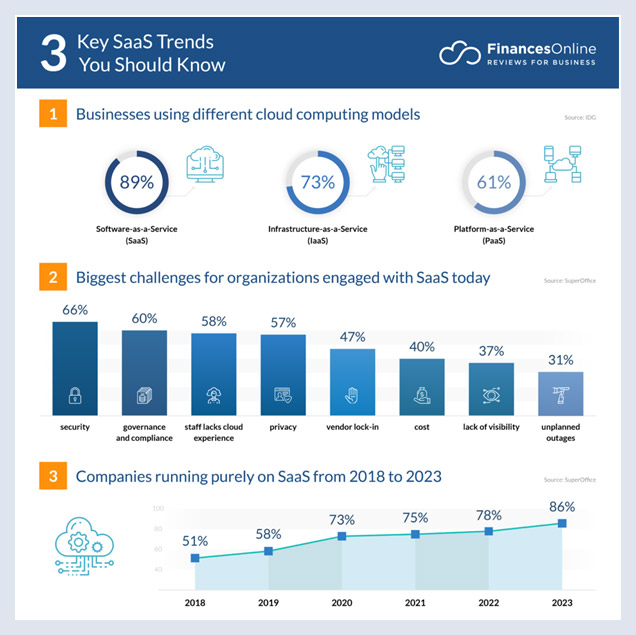
This article will explore the top ten SaaS trends that you should follow this year.
1) Artificial Intelligence(AI)
Artificial Intelligence (AI) is deep-rooted in modern society, and the innovation it has brought helps businesses drive a better product, service, or content personalization.
It also gains a deep and data-driven understanding of customer needs. AI can make businesses more efficient even with fewer resources.
Artificial intelligence will potentially disrupt the SaaS landscape in many ways and improve the fundamental elements of the SaaS model across the board.
SaaS combined with AI capabilities:
- enables enterprises to get better value from their data,
- can automate and enhance security, and personalize the services,
- can provide better speed, security, personalization as compared to human capacity.
2) Machine Learning (ML)
Being a subset of Artificial Intelligence, ML is used to automate responsiveness in customer service reports and applications. Machine Learning innovations facilitate software and platforms empowering enterprises. These platforms automate significant pieces of internal operations except for customer service.
It is a fast-growing segment of software and helps businesses in:
- Building software that can learn from each assignment or interaction
- Digging deeper into contextual data and insights
- Enhancing internal collaboration and operations via more refined models of communication
- Improving consumer communications and service output by constantly adjusting the tone of voice, language, and practical functions in line
3) White Labeling
SaaS white labeling is a process, technique, or method where a software-based company designs, tests, and finalizes a platform and then sells it to other companies.
The purchasing company then can customize and sell it under its branding.
White labeling can also be a component of the embedded BI tools enabling companies to integrate an explanation within their application.
White labeling can be valuable for startups that look to acquire market share fast and with fewer logistical or economic costs to think about. These startups can then focus on their value proposition, strategy, and branding rather than starting from scratch.
4) Low code-capabilities
These out-of-the-box style data centers won’t eradicate the need for developers or engineers. When you have less code to write to form the base of your platform, it signifies that your technical staff or contractors can give more time to innovations.
In this year, No-code SaaS development capabilities will boost productivity and bring new players to the market. The reason businesses should opt for ‘low code’ solutions are:
- To fasten digital transformation and innovation,
- To lessen existing IT or technical backlog,
- Increase responsiveness,
- To drive down reliance on hard-to-hire technical skills, and
- To enhance their internal processes.
Low-code capabilities have given a new face to the SaaS landscape. With low-code solutions, there is no need to completely eliminate developers or programmers. However, they can focus on other important tasks like working on innovations. It gives SaaS companies a competitive edge.
The low-code solutions are here to accelerate digital innovations and boost responsiveness by the experts. The dependency on skilled or specialized staff reduces, saving a lot of time, effort, and money that goes into hiring such experts. These solutions also help organizations improve their internal processes and protect them against technological churn.
5) Centralized Analytics
The SaaS industry trend is data-driven. With digital transformation across industries booming, firms across sectors examine data to facilitate their association while acquiring a deeper understanding of their consumers. The investments that will be made in the analytics-driven software-as-a-service innovations are expected to fly high.
This centralized analytics will help the consumers to look into their data and uncover hidden insights by employing modern solutions like performance SaaS dashboards, where each team member has credentials to the important business details.
Also, the SaaS models are centralized. They will enable consumers to access data at any time and from any device.
6) Vertical SaaS
While horizontal SaaS concentrates on customers across sectors and industries, Vertical SaaS is fully customizable and can target buyers within specific enterprises and supply chains.
Companies that want to benefit from specialization find it a cost-effective and industry-specific option. It enables these companies to refine the customization of their specific features.
Vertical SaaS can provide the following gifts to businesses:
- Customer intelligence,
- Pre-defined metrics and KPIs, and
- Business value and enhance data governance.
7) Rise of MicroSaaS
MicroSaaS is a little tool created to improve the existing function of SaaS products. These MicroSaaS tools possess extensions, add-ons, or accessories to other tools or platforms.
Nowadays, many MicroSaaS tools do a great job in the SaaS market by including Boomerang for Gmail, Grammarly, Yoast SEO plugins, Mailtrack, and Sprout Social.
MicroSaaS projects usually need smallish expenses and can be easily achieved without external funding. MicroSaaS have high margins and are also location-independent. These advantages, associated with low overheads, have initiated a massive uptick of MicroSaaS.
8) Migration to PaaS
SaaS vendors nowadays are moving to platform-as-a-service (PaaS) to retain their clients. PaaS entrusts clients/businesses to create custom applications as essential add-ons to their unique services.
It’s not the desire to control a sizable market share or retain customers that forces companies to launch PaaS-centric solutions. Factors like flexibility, accessibility, and a robust delivery model help the customers scale their businesses with ease. PaaS delivers the needed security for companies to execute numerous automatic upgrades regularly.
9) Mobile-First Approach
Business proprietors run their businesses from their smartphones nowadays. Similarly, employees pick mobility while doing their jobs. This paradigm shift has caught the eye of SaaS vendors. These vendors have responded to this demand by bringing effective SaaS solutions for project management and communications with powerful and function-rich mobile applications.
It is not wrong to expect SaaS companies to continue developing and enhancing mobile apps for their tools and services.
10) Blockchain and SaaS
We all know blockchain is there to eliminate frauds and data inaccuracies online. It is a revolutionary technology that helps make the online space safer. It has been doing rounds in the digital world for years now and has finally entered the SaaS industry.
Blockchain helps SaaS companies prevent fraud and make the platforms more advanced and safer. With blockchain on board, SaaS platforms become more reliable and help organizations win customer loyalty and satisfaction.
So, these were the top 10 SaaS development trends you should follow now. If you are working in the SaaS industry, it is crucial to be in touch with these trends and garner benefits from them this New Year.
